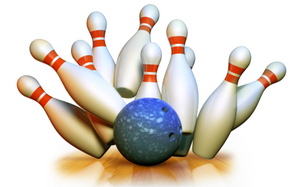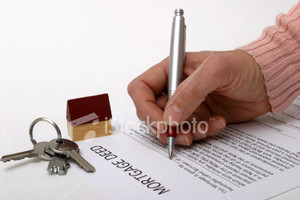Today there are many different types of ten pin bowling such as: No Tap, Monte Carlo, Odd/even game, or even bumper bowling for the young. The focus of this article is on the general rules and regulations for sanctioned league play, and also regular ten pin bowling in the Unites States.
All of these rules and regulations are sanctioned by the United States Bowling Congress and are followed by: sanctioned events, leagues, and also tournament play. Listed below are several areas of focus which show the general rules for ten pin bowling.
Playing Area
The bowling lane itself must be 60 feet long from the foul line to the head of the number one pin (or the head pin) which must stand on board number 20 of the bowling lane. The width of the bowling lane must be 41.5 inches, and usually consists of 39 wooden boards or a similar type of synthetic surface.
On the approach lane area there must be two sets of approach dots which are measured at 12 and 15 feet from the foul line. Normal application of oil on the lanes is usually started at 4 inches past the foul line to an average of 38 feet beyond the line.
Bowling Pins
According to the rules of the USBC all pins are required to be “15 inches (38 cm) tall and about 4.7 inches (12 cm) wide at its widest point.” The single pin must weigh “at least” 3 pounds 6 ounces, and no more than 3 pounds 10 ounces.
Weight distribution of these pins is also regulated on a top to bottom balance ratio. All bowling pins must bear the mark of its maker such as: USBC Approved, or BTBA Approved. With a complete set of ten bowling pins, each individual pin’s weight must not vary over four ounces.
Bowling Balls
By the rules and regulations of sanctioned play all bowling balls must not be over 2.25 feet in circumference. The weight of bowling balls is not to exceed 16 pounds (7.26 kg). The total surface of the ball must be smooth except for the finger holes or finger tip grips.
Rules of play
The game of ten pin bowling consists of ten individual frames of play. Each frame the player gets two balls if needed to knock down ten pins. If there is more than one player each player rotates turn until their turn at play arrives. In league play the lane is also rotated in turn; most league games are played with two lanes of play, with two separate teams competing against each other.
If the player knocks down all ten pins in one ball they are awarded a strike and an X is marked in the appropriate box of scoring. If the player knocks down all of the pins in two balls a spare is awarded and a / is marked into the scoring box.
Strikes and spares are considered “marks” in league play and bonus points are given to each of these. When a strike is thrown, this ball is counted as 10 points plus the next two balls. When a spare is thrown, the ball is counted as 10 points plus the next ball.
In the tenth frame the bowler is allowed an extra shot if they strike or spare in this frame. The maximum number of strikes that can be thrown in ten pin bowling is 12; which brings the score to a perfect game of 300.
Scoring
Generally the rule for bowling is one point for each pin knocked down, plus bonus points on strikes and spares. Each game of bowling consists of ten individual frames. The player gets a turn to throw two balls in each frame in order to knock down ten pins.
Each frame is scored individually as the game is played. Bonus points are awarded for strikes and spares. Strikes count ten points plus the next two balls, and spares count ten points plus the next ball. The maximum number of points which can be made in any frame is thirty points.
The more strikes you throw together as a group the more bonus points you receive. Groups of strikes are referred to as “baggers” such as a “two bagger” or three strikes in row which is referred to as a “turkey.” Any frame in which all of the pins were not knocked down is referred to as an open frame, and is scored by the pins which were knocked down.
If the player makes either a strike or a spare in the tenth frame they are awarded an extra throw, which increases the possible strike count. Leagues which include handicaps work on a point system which estimates the balance of team play throughout the game. This point system is located at the bottom of the scoring display.
If you’re looking to join a bowling league most winter leagues usually start around September and normally end in the spring. These leagues are usually between 28 and 36 weeks as a general rule of thumb. Summer leagues are also formed for much shorter seasons.
As always courtesy and respect must be shown in the bowling alley, although this is an unspoken rule. The heart of bowling is the challenge of the game and the crash of the pins you hear as your ball goes tearing through the middle of the pins; leaving nothing standing in its wake.
Source of information:
en.wikipedia.org/wiki/Ten-pin_bowling


